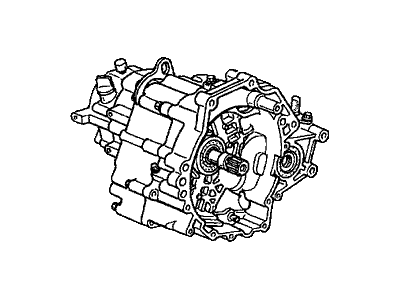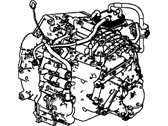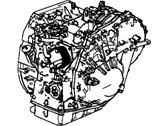×
- Live Chat
- 1-888-984-2011

My Garage
My Account
Cart
Genuine Honda CR-V Transmission Assembly
Trans Assembly- Select Vehicle by Model
- Select Vehicle by VIN
Select Vehicle by Model
orMake
Model
Year
Select Vehicle by VIN
For the most accurate results, select vehicle by your VIN (Vehicle Identification Number).
38 Transmission Assemblies found
Honda CR-V Transmission Assembly (Dot) (Mt)
Part Number: 20011-PPS-A42$3454.89 MSRP: $5085.13You Save: $1630.24 (33%)Honda CR-V Transmission Assembly (Dot) (Automatic)
Part Number: 20021-RXD-A00$3978.51 MSRP: $5620.49You Save: $1641.98 (30%)
| Page 1 of 2 |Next >
1-20 of 38 Results
Honda CR-V Transmission Assembly
In search of affordable OEM Honda CR-V Transmission Assembly? Consider browsing through our extensive inventory of genuine Honda CR-V Transmission Assembly. Not only do we provide market-leading prices and a manufacturer's warranty, but we also pride ourselves on exceptional customer service and swift delivery.
Honda CR-V Transmission Assembly Parts Questions & Experts Answers
- Q: How Can Problems With an Automatic Transmission Be Diagnosed on Honda CR-V?A: In the event of a problem occurring, it will be necessary to establish whether the fault is electrical, mechanical or hydraulic in nature, before repair work can be contemplated. Diagnosis requires detailed knowledge of the transmission's operation and construction, as well as access to specialized test equipment, and so is deemed to be beyond the scope. It is therefore essential that problems with the automatic transmission are directed to a dealer service department or other qualified repair facility for assessment. Note that a faulty transmission should not be removed before the vehicle has been diagnosed by a knowledgeable technician equipped with the proper tools, as troubleshooting must be performed with the transmission installed in the vehicle.
- Q: How to remove and install a Transaxle on a Honda CR-V?A: Read through the entire procedure before beginning. The engine and transaxle are removed as a unit from below, then separated outside the vehicle. Removal starts with setting the steering wheel straight ahead and locking it. Adjust the steering column tilt and telescoping to the center positions. Under the driver's side of the instrument panel, remove the steering column coupler cover. Use wire to tie the upper and lower ends of the column shaft together at the U-joints to prevent the lower part from sliding out after disconnecting from the rack and pinion. Loosen the pinch bolt at the lower U-joint. Open the hood, cover the fenders and cowl, then remove the air intake duct, air filter housing, and, on Civic models, the plastic fasteners, upper cover, wiper arms, wiper cowl, and lower cowl panel. Remove the battery, battery tray, and the PCM and bracket. On CR-V and Civic CVT models, disconnect the Shift Cable from the transaxle. Label and disconnect all vacuum lines, emissions hoses, electrical connectors, and harness clamps/brackets. Disconnect the transaxle fluid cooler lines and unbolt the ATF warmer from the transaxle on specific models. Support the engine with an engine support fixture or hoist. Remove the upper transaxle-to-engine bolts, ground cable, transaxle mount, and bracket. After raising the vehicle, remove the wheels, engine splash shield, inner fender splash shields, and drain the transaxle fluid. Remove the subframe. On certain models, unbolt the ATF warmer. Remove the torque converter cover, mark the relationship of the torque converter to the driveplate, and remove the bolts connecting them. Remove drive axles, intermediate shaft, catalytic converter, and pipe or transfer case on specific models. Support the transaxle with a jack, remove the remaining transaxle-to-engine bolts, and lower the transaxle from the vehicle. Installation starts with flushing the transaxle cooler and hoses. Ensure the torque converter hub is engaged in the transaxle pump and raise the transaxle into position. Align marks on the torque converter and driveplate, engage the dowel pins, and tighten the transaxle-to-engine bolts. Continue the installation by tightening the subframe bolts, driveplate bolts, driveaxle/hub nuts, and using new O-rings on the ATF warmer. Refill the transaxle with lubricant, start the engine, shift through gears, and check fluid levels. Finally, road test the vehicle for any fluid leaks.
Related Honda CR-V Parts
Browse by Year
2019 Transmission Assembly 2018 Transmission Assembly 2017 Transmission Assembly 2016 Transmission Assembly 2015 Transmission Assembly 2014 Transmission Assembly 2013 Transmission Assembly 2012 Transmission Assembly 2011 Transmission Assembly 2010 Transmission Assembly 2009 Transmission Assembly 2008 Transmission Assembly 2007 Transmission Assembly 2006 Transmission Assembly 2005 Transmission Assembly 2004 Transmission Assembly 2003 Transmission Assembly 2002 Transmission Assembly 2001 Transmission Assembly 2000 Transmission Assembly 1999 Transmission Assembly 1998 Transmission Assembly 1997 Transmission Assembly















